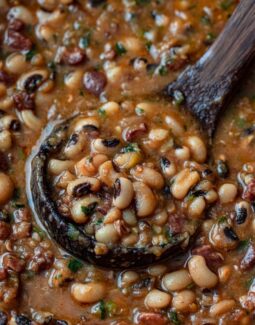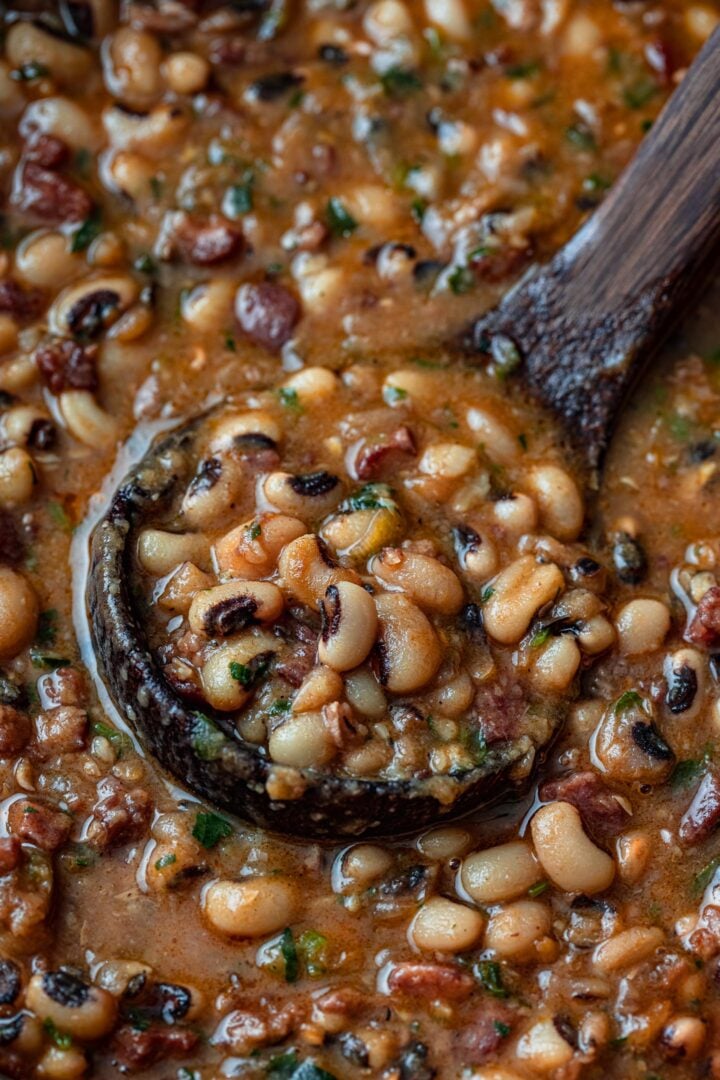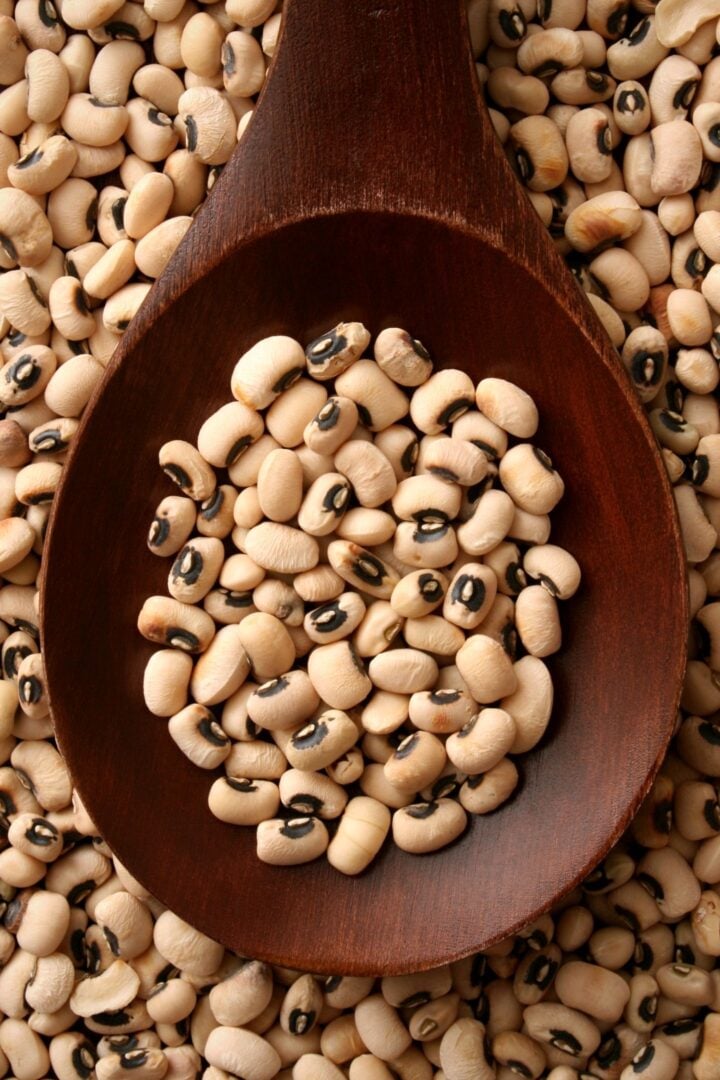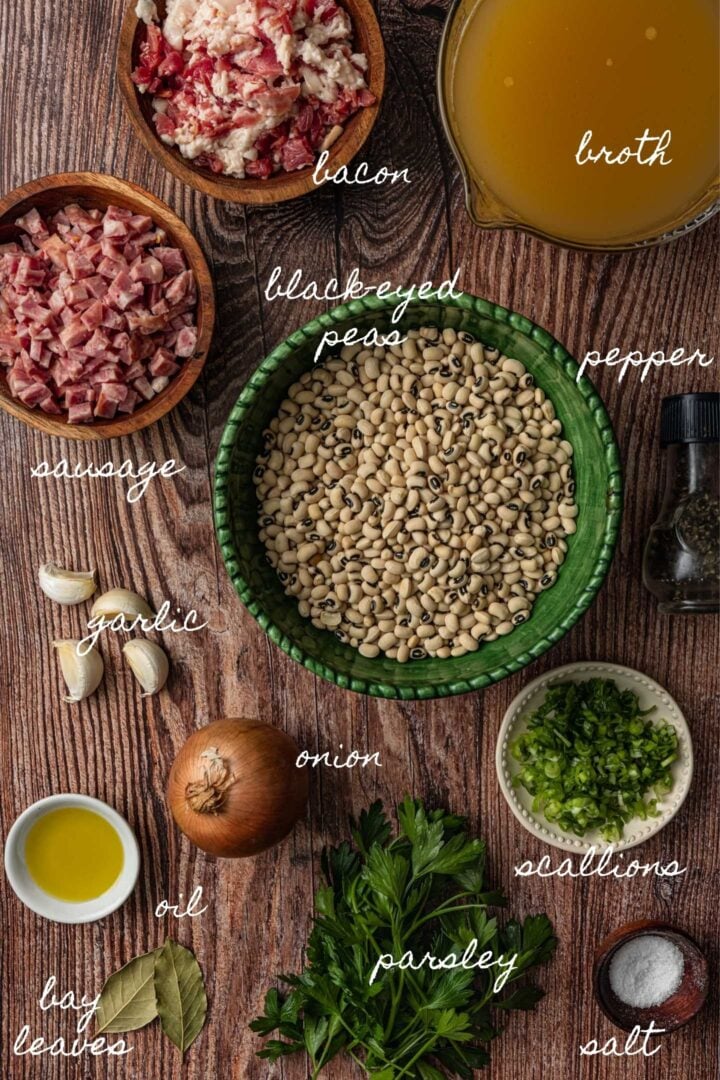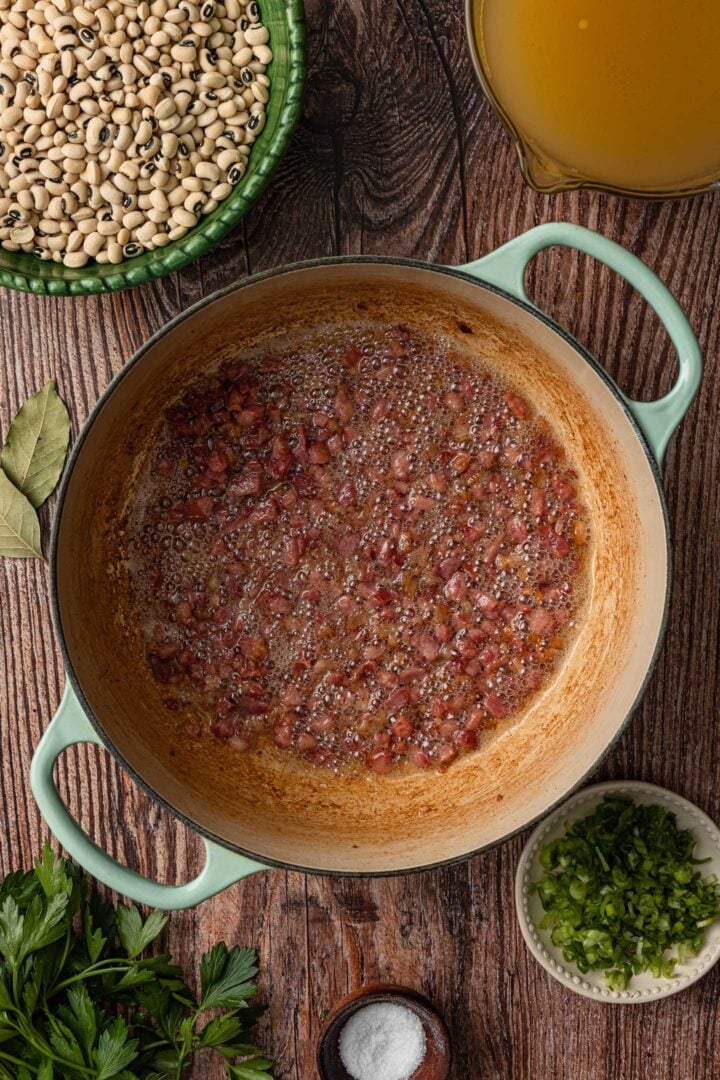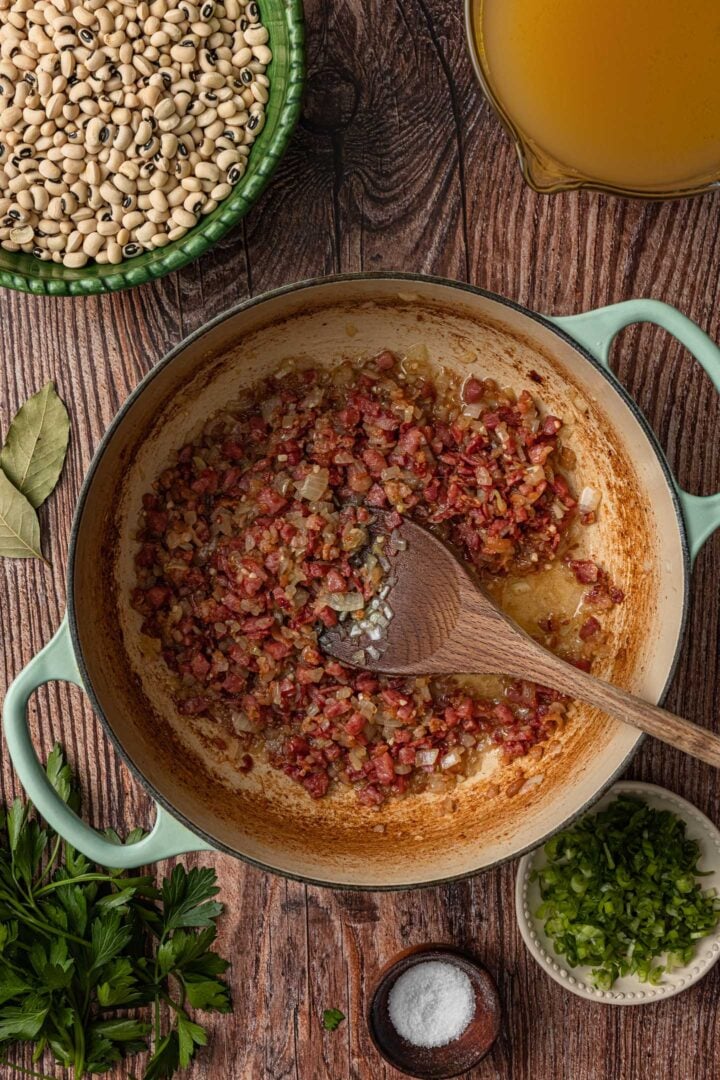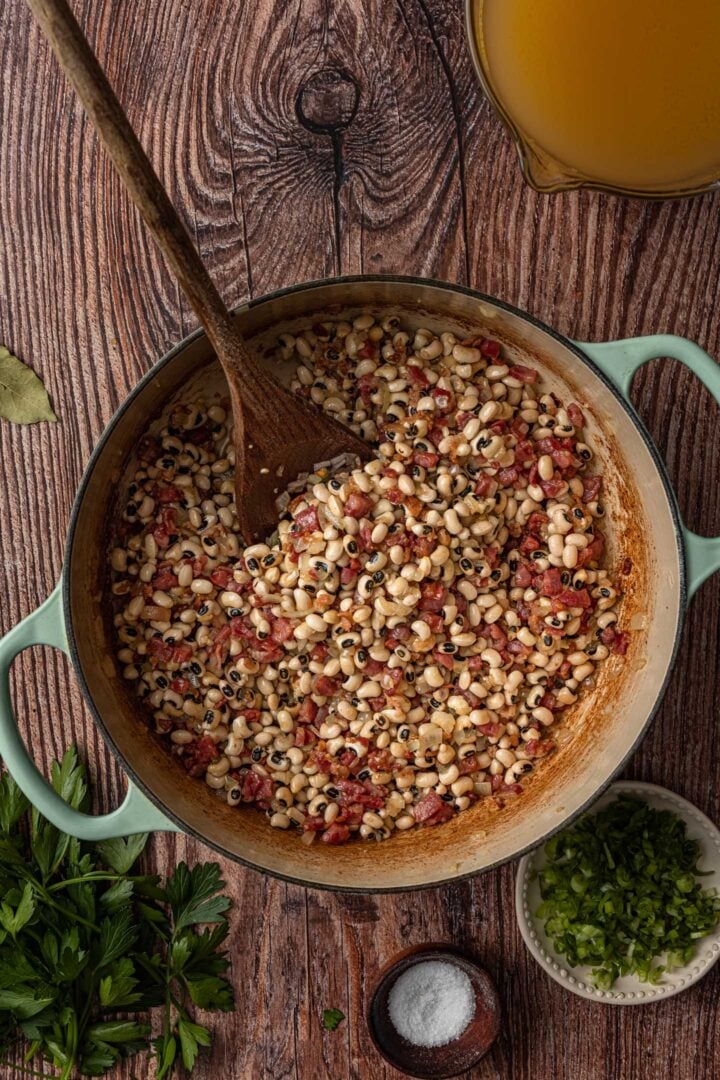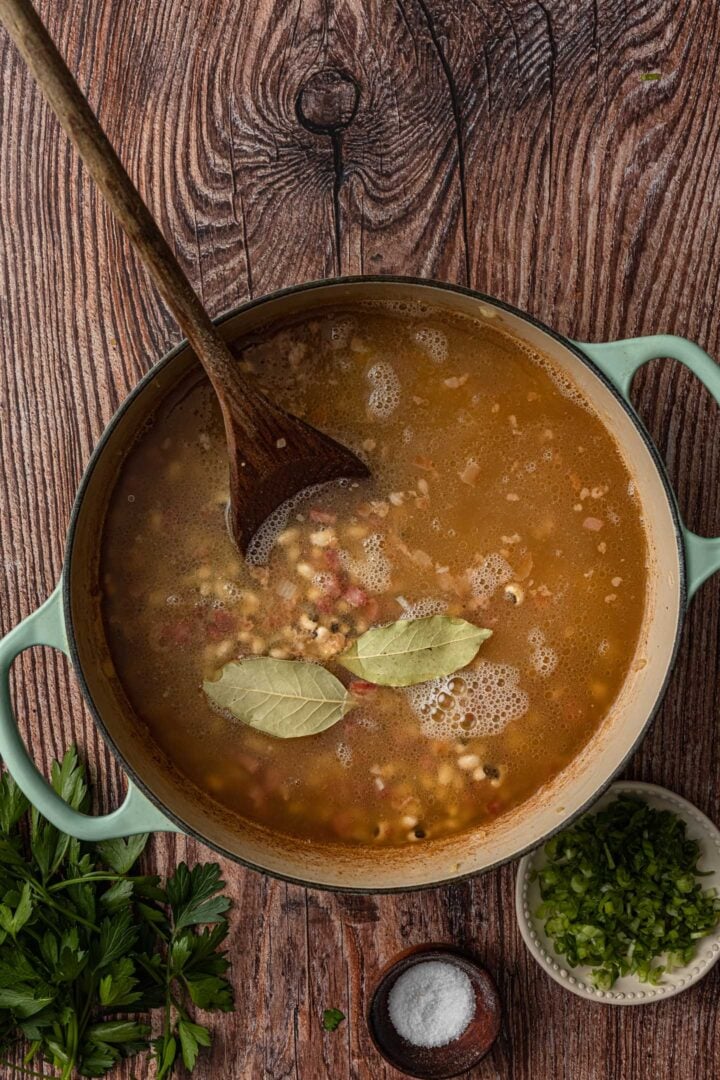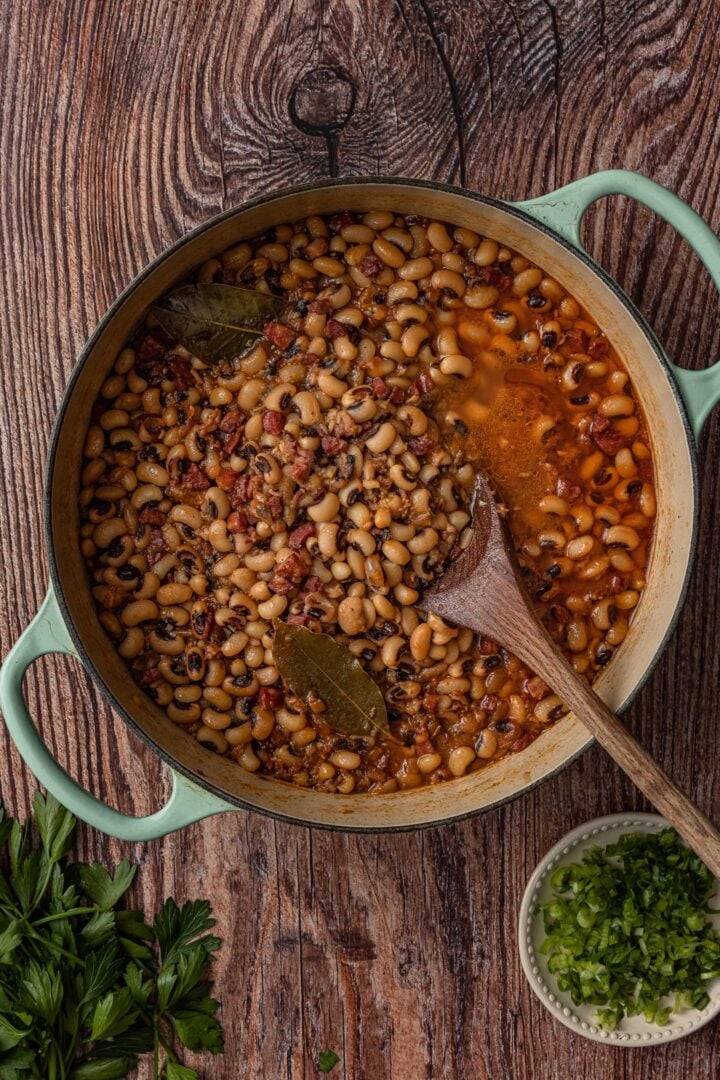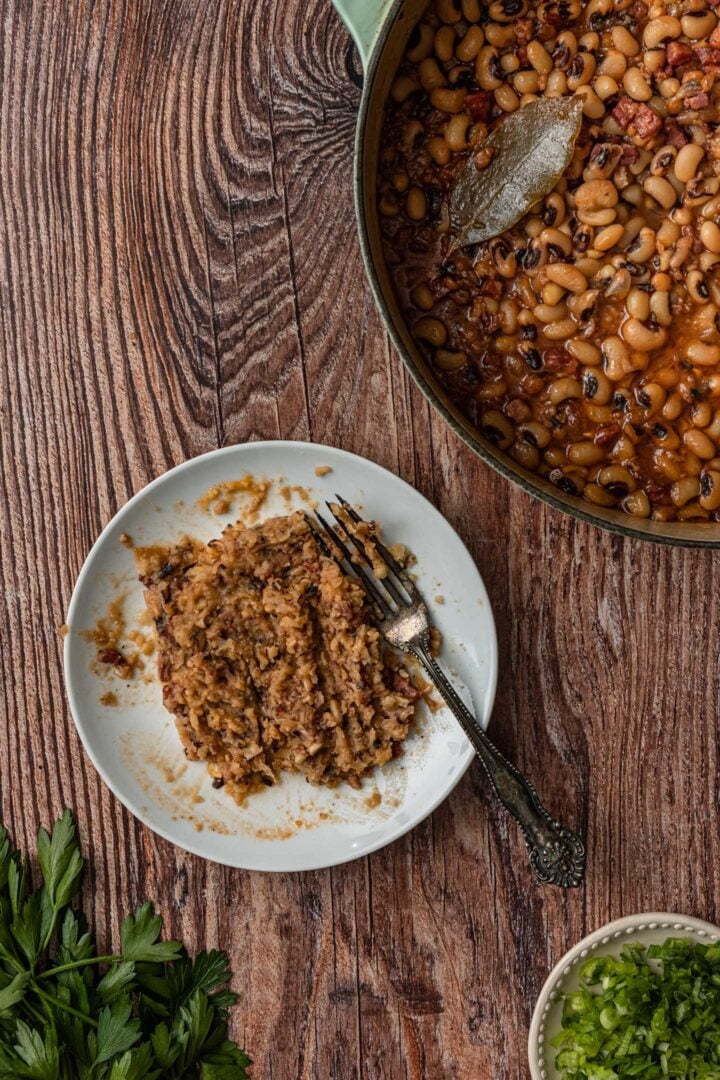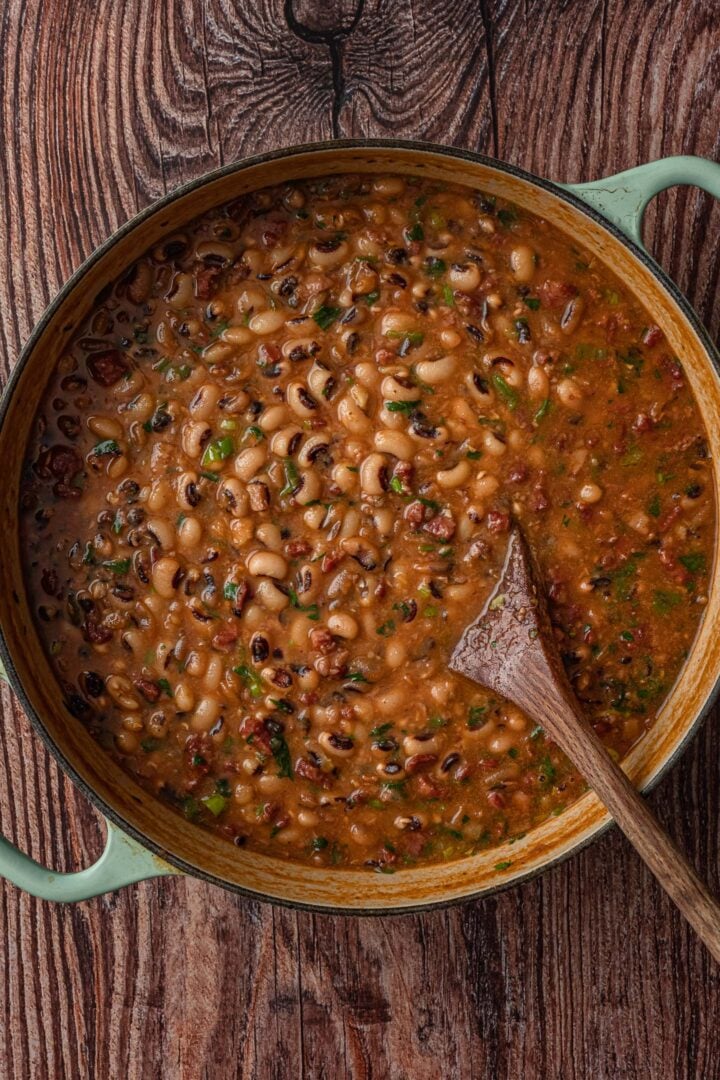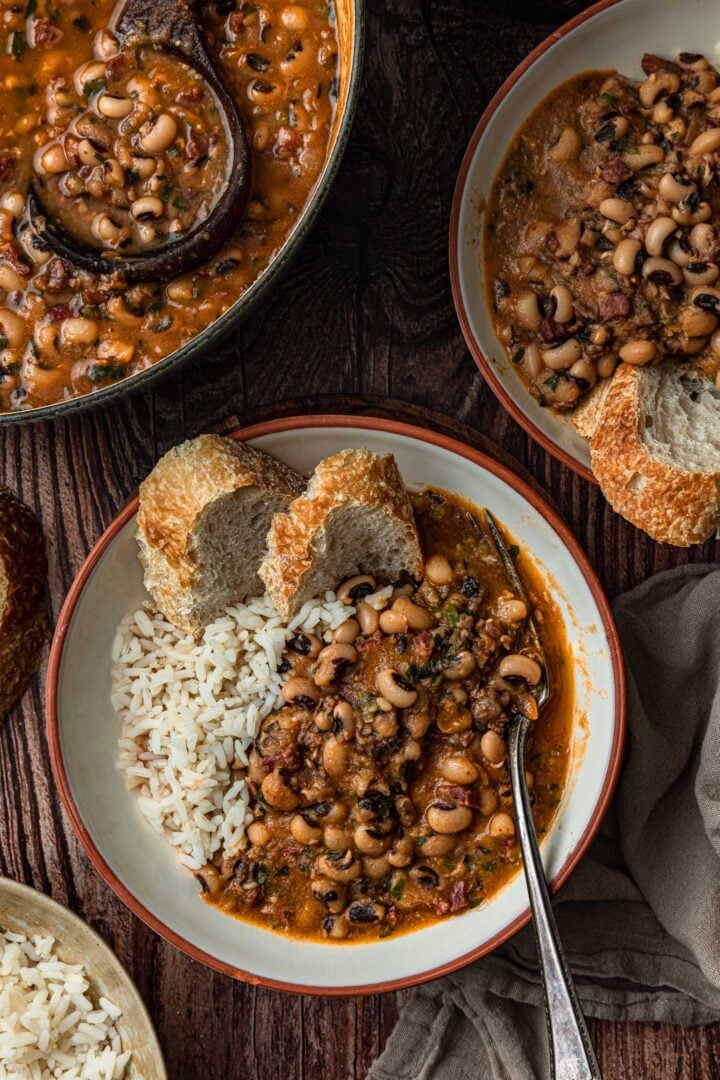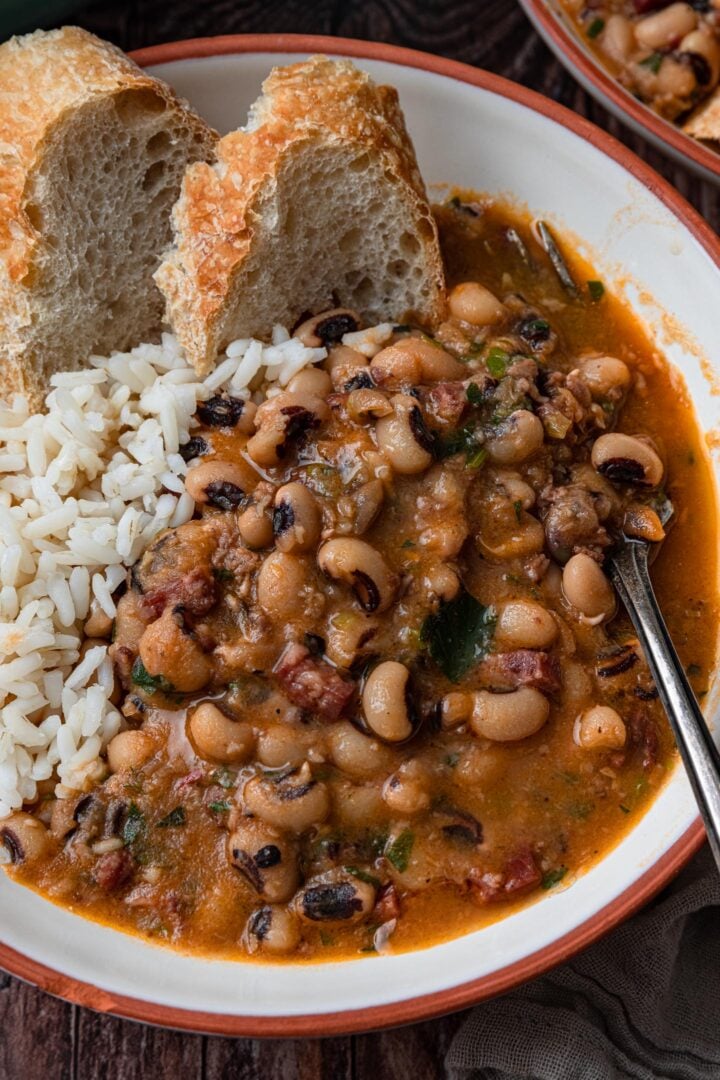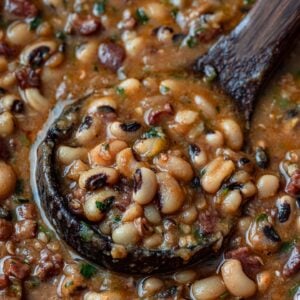Serve these black-eyed peas with rice for a satisfying meal! It also goes great with my collard greens and a side of cornbread, turning them into a true Southern feast. Black-eyed peas are more than good luck charms on New Year’s Eve, they are something I like to eat all year round! And while they are very much associated with Southern cuisine, they are also popular in my home country, Brazil. Coincidentally, this black-eyed peas recipe resembles many I’ve seen shared in soul food blogs, just not spicy – as Brazilian cuisine is rarely spicy. That leads me to (boldly) thinking it would be perfectly fine to serve them as part of both a Southern meal as well as a Brazilian one. And that shouldn’t come as a surprise, as both these cuisines have strong African roots and black-eyed peas come from Africa. Whichever culture you choose to embrace, these delicious black-eyed peas are guaranteed to be a hit!
What are Black-Eyed Peas?
Despite the name, black-eyed peas (also known as cowpeas) are not peas but beans! Native to Africa, they are rich in iron, potassium, fiber and protein while also low in fat and sodium. They are popular in several cuisines around the world, including Brazil, where they are called “feijão fradinho” and used to make the popular acarajé (black-eyed pea and shrimp fritters). Here in the United States, they are a soul food staple in the South. In fact, Southerners believe that eating black-eyed peas on New Year’s Day will bring you prosperity in the new year. There are two legends that try to explain the origins of this custom, both dating back to the Civil War. The first one claims that when General William T. Sherman pillaged the Confederates’ food supplies, it left black-eyed peas and salted pork untouched, saying they were animal food and unfit for human consumptions. These supplies ended up helping Southerners survive the winter, so the black-eyed peas became a representation of good luck. Another theory says that black-eyed peas were a symbol of emancipation for African-Americans, who were officially freed on New Years Day.
But what do they taste like?
They taste like most beans: savory, starchy and a touch of nutty. They are also pretty earthy! When cooked, they have a dense, creamy consistency that is absolutely delicious.
Ingredients
To make this black-eyed peas recipe, you will need:
Black-Eyed Peas – Here I’m using dried black-eyed peas, most specifically the California Blackeye variety (pale-colored with a prominent black spot), which is most of you will find in the supermarket. If you are lucky enough to find heirloom black-eyed peas, you can definitely use them as well! You can also use canned, but cooking times will change.Bacon – Choose thick cut bacon, as it is easier to dice. I also recommend popping your bacon in the freezer for 20 minutes to 30 minutes, just until it firms up, as that will make it much easier to cut.Sausage – You can use any smoked sausage you can find, such as kielbasa, calabresa or andouille.Onion and Garlic – The aromatics for the flavor base! Don’t skimp on the garlic. Garlic is life! 😊 Herbs and Scallions – You’ll need bay leaves (dried or fresh), fresh parsley and scallions.Chicken Broth – You can use chicken broth or chicken stock, homemade or store-bought. If you don’t have any on hand, water will do in a pinch (preferably with a cube or two of bouillon).Oil – A little bit of olive oil, just to get things going. The bacon and sausage will release quite a bit of grease, so you can skip if you want!Salt and Pepper
Optional: I like to add a tablespoon or two of tomato paste. Black-eyed peas don’t produce a dark broth like most beans, and I find that they look more appetizing if I add a bit of color with the tomato paste.
How to Cook Black-Eyed Peas
Cooking black-eyed peas is no different than cooking any other bean. Here I’m showing you how I cook them on the stove, but you can certainly adapt this recipe for the instant pot or slow cooker. I’ll share instructions down below! I recommend using a Dutch Oven – because they retain and distribute heat evenly – but any heavy bottomed pot will do! Just make sure to keep an eye on your black-eyed peas while they cook, as pots and stoves vary and you might need to add some more liquid if the broth is evaporating too fast. There should always be liquid covering your beans as they cook. Recommended tools and equipment: Dutch Oven. Here’s how I make this black-eyed peas recipe. As always, you will find the printable (and more complete) version of the recipe at the end of this post!
Step 1: Brown the bacon and sausage.
Heat the olive oil in a large pot (preferably a Dutch Oven) and cook the bacon and sausage until lightly browned and the fat has rendered. If the pork has released a whole lot of fat, I recommend using a paper towel to soak some of it so the final broth is not too greasy.
Step 2: Cook the aromatics.
Add the chopped onion and garlic, sautéing until softened and fragrant.
Step 3: Cook the black-eyed peas.
Stir in the peas, broth and bay leaves. Season with salt and pepper.Bring to a boil, then cover and simmer until the peas are tender. The time will depend if your black-eyed peas were soaked overnight. If yes, that might be around 1 hour. If not, closer to 1 1/2 hours or even a little longer.
Step 4: Thicken the broth.
Remove about 1/2 cup of cooked black-eyed peas to a plate or bowl. Using a fork, mash them into a paste. Return this paste to the pot and increase the heat to medium. Let the broth boil until it thickens to the desired consistency. Add more liquid if you need to thin the broth out.If desired, stir in 1-2 tablespoons of tomato paste to give the broth some color.Discard the bay leaves and stir in the parsley and scallions. Adjust seasoning and serve!
Instant Pot Method
To cook black-eyed peas in a pressure cooker, heat the oil on the sauté mode and then brown the bacon and sausage. Add the onions and garlic and sauté until softened. Stir in the soaked or unsoaked black-eyed peas, bay leaves, seasonings and broth. Make sure to not exceed the max fill line for your Instant Pot. Close the lid and cook at high pressure for 10 minutes and then let pressure release naturally. (Check for tenderness and cook longer if needed.) Turn the sauté mode again, smash 1/2 cup of peas and return them to the pressure cooker, letting the broth boil until it reaches the desired consistency. Discard bay leaves, stir in the parsley and scallions, adjust seasoning and serve!
Slow Cooker Method
To use a slow cooker to make this black-eyed peas recipe, follow the recipe as written to brown the bacon and sausage, and sauté the aromatics on the stove. Then, transfer everything to the slow cooker, and add the black-eyed peas, bay leaves, seasonings and broth. Cook on low for 6 to 8 hours (or high for 4 to 5 hours), or until the peas are tender. Smash 1/2 cup of the beans and return to the slow cooker. Cover and cook on high for about 30 minutes, or until the broth thickens to the desired consistency. Then, discard bay leaves, stir in the parsley and scallions, adjust seasoning and serve!
What to Serve with Black-Eyed Peas?
To me, a pot of hot black-eyed peas goes with white rice like Romeo goes with Juliet! 😂 And, together, they make a great side for chicken or beef. In the South, they are often accompanied by greens (collard-greens, cabbage or mustard greens) and a side of cornbread or biscuits. And, if you are going the Southern way, don’t forget the hot chili sauce or pepper-flavored vinegar!
Variations
There are many variations to this black eyed peas recipe. Here are some suggestions:
Make it vegetarian! Skip the bacon and sausage, and use vegetable broth (or water) instead of the chicken broth. You can also add some vegetables, like carrots, bell peppers and/or celery to make it more nutritious.Add a ham hock for an even stronger pork flavor!Substitute the sausage for shredded chicken or turkey. This is a great way to use leftover turkey from Thanksgiving!Spice things up! Add a touch of smoked paprika, cayenne, red pepper flakes, chili powder or cajun seasoning if you like things hot.Like a strong herb flavor? Stir in your favorite dried herbs: oregano, rosemary, thyme, etc.
More Black-Eyed Peas Recipes
Black-Eyed Pea SaladSweet Potato Chili
